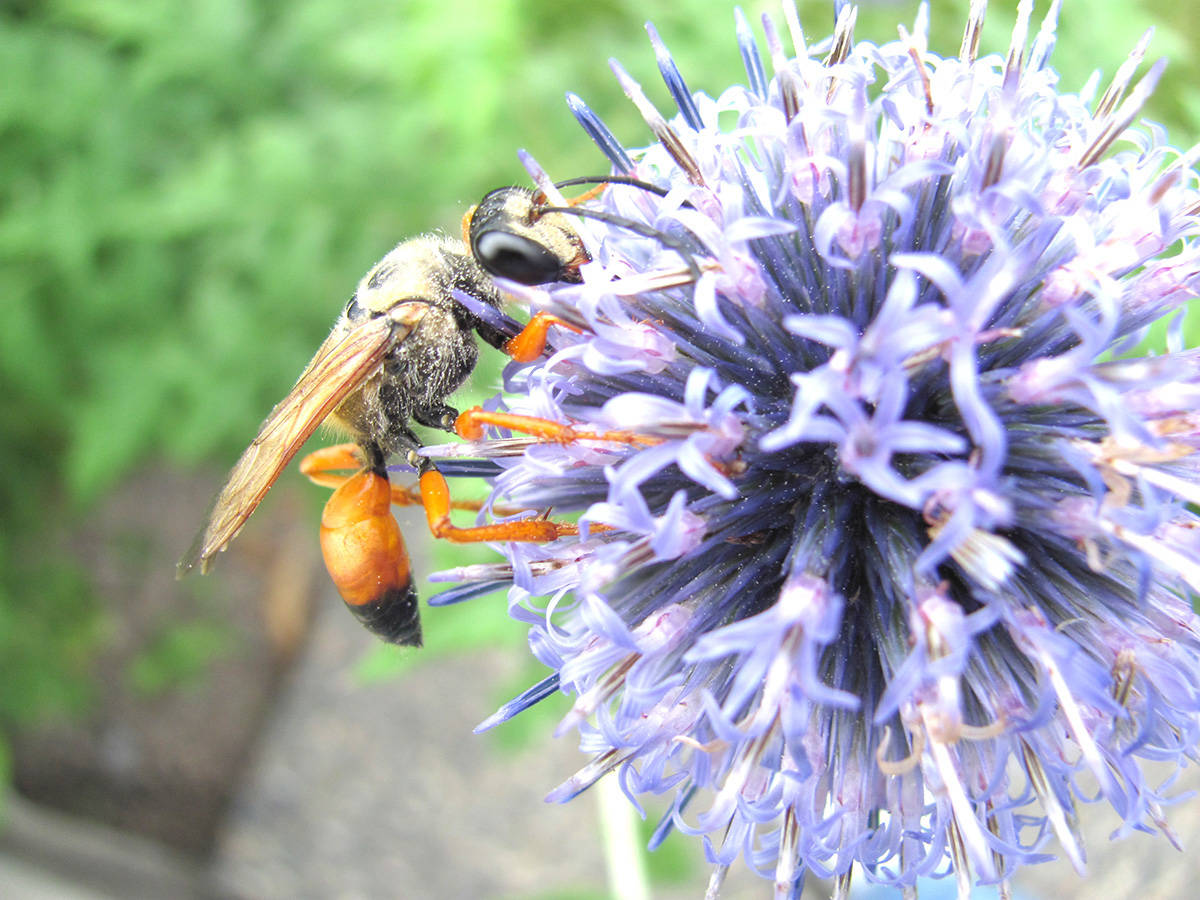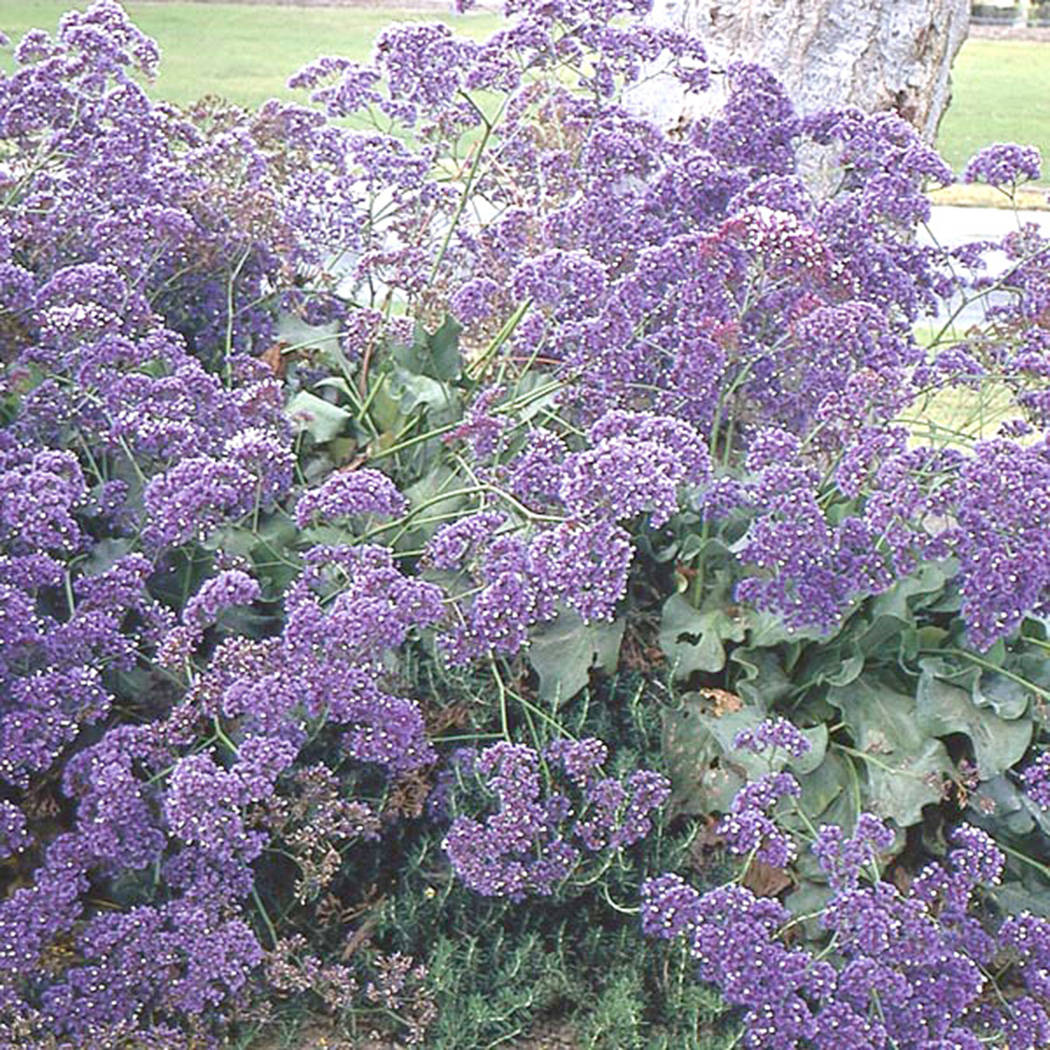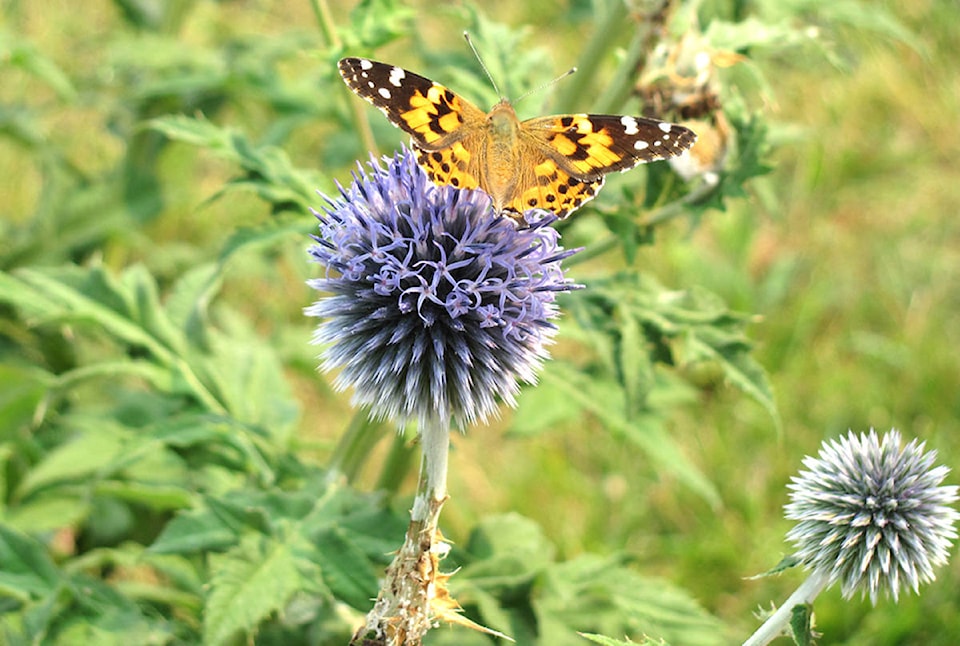A year ago, I wrote an article on Baby’s Breath, and why this pretty ball of blue flowers that may take a hobby gardener’s breath away is bad for our local ranching economy when it invades and takes over a hay field.
This year, I am focussing on the GMI (Grow-me-Instead) flowering plants that the Invasive Species Council of B.C. (ISCBC) recommends you buy instead — plants such as Pearly Everlasting, Filigran Russian Sage, Hewitt’s Double Meadow Rue, Sea Lavender and White Flax.
ISCBC says Pearly Everlasting is a native Canadian Zone 3 plant that attracts Butterflies and other pollinators to your yard.
According to the Canadian Wildlife Federation, Butterflies, like American Painted Lady, use drought-tolerant Pearly Everlasting that flowers from mid-summer until the fall, as a host plant to raise their young.
Fragrant Filigran Russian Sage, with its rich violet-blue flowers, is promoted by perennials.com as a versatile long-season bloomer that loves direct sunshine and prospers in perennial borders or pots and among shrubbery.
Perennials.com also promotes “ferny, blue-green leafed” Hewitt’s Double Meadow Rue and its “cloud-like sprays of double-mauve flowers.”
The website also recommends staking this tall, flowering beauty.
Gardeningknowhow.com tells us that Sea Lavender is native to American coastal salt marshes and sand dunes; also, that it will grow in Zones 3-9, likes sandy soil best, and that your garden center experts can recommend which variety to plant locally.
According to eaglelakenurseries.com, low-maintenance, non-native White Flax, with its yellow-eyed, airy, white flowers and its blue-green leaves, likes rock gardens and is not on the menu of browsing deer.
Finally, a plug for one of my garden favourites, Globe Thistle. Pollinators like to pose on this multi-flowered ball much longer than on other nectar sources, so that slow, fumble-fingered photographers, like myself, can snap some focussed images.
Weed Warrior Frank


